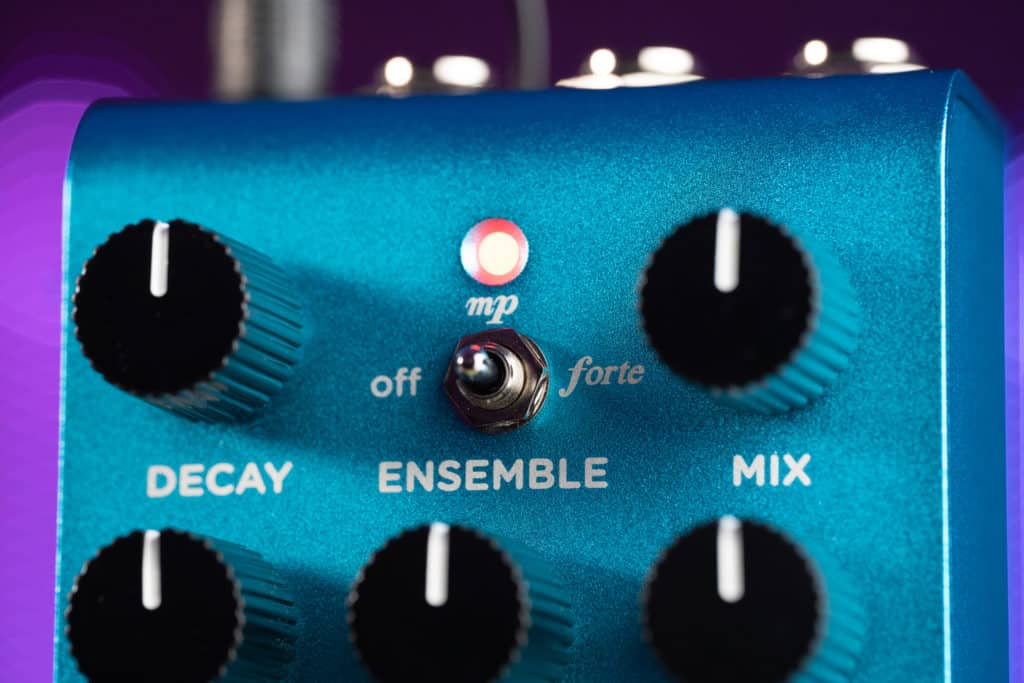A New Beginning.

We had some very lofty goals in mind with Cloudburst, and foremost on the list was creating the best-sounding single algorithm reverb we possibly could. We knew that we wanted to provide the spacious experiences from BigSky’s Cloud machine at higher decay settings, and we set about tailoring the short end of the decay range to generate a huge variety of natural and studio-quality smaller spaces as well.
In addition, we wanted to provide a whole new variety of sounds never before heard from a reverb pedal, which we accomplished in part with the addition of our new Ensemble effect. Ensemble’s design ensures a natural and artifact-free interaction between the reverb and your guitar signal, so with the switch in its mezzo piano (or “moderately soft”) position, it can subtly enhance the character of the reverberated signal, while it can yield huge string ensemble effects reminiscent of vintage polyphonic “string machine” synthesizers when set to forte.
Finally, we wanted to create something that was easier to use than any product we’d ever designed. As a result, there are no secondary or “hidden” functions on Cloudburst – it’s controlled by just a few knobs and a switch, exactly as they’re labeled, so you can dial up the perfect sound instantly with no fuss.
Transform Your Reverb.
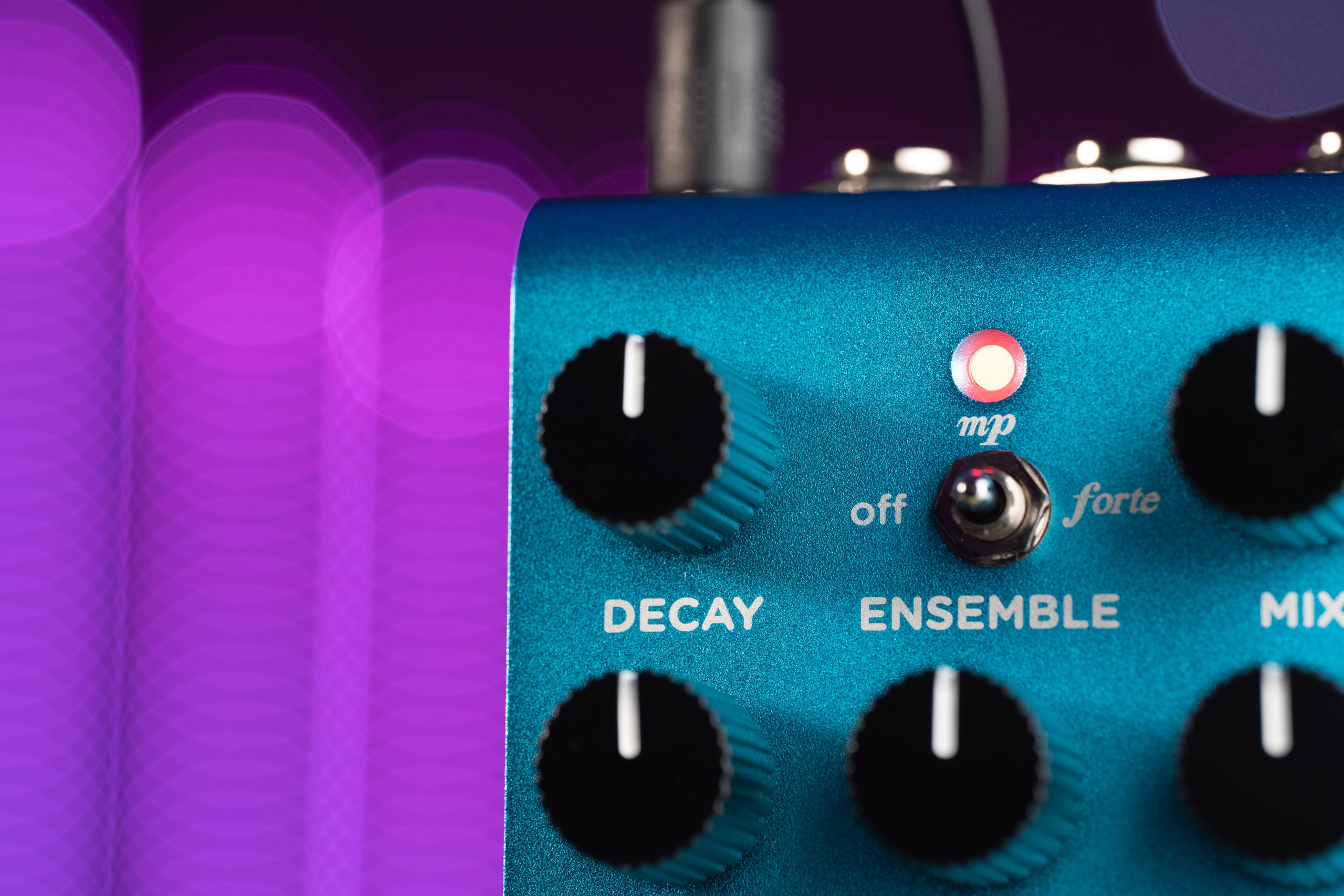
The Decay knob on Cloudburst does some seriously heavy lifting.
Not only does it control the duration of the reverb tail, but it also dramatically transforms the character of the reverb via a number of continuous under-the-hood adjustments, allowing you to discover countless new musical and inspiring sounds at different points all along the dial.
Even tiny adjustments of this knob can yield noticeable changes to the character of the reverb, so the Decay control is central to the operation of Cloudburst.
Harmonic Magic.
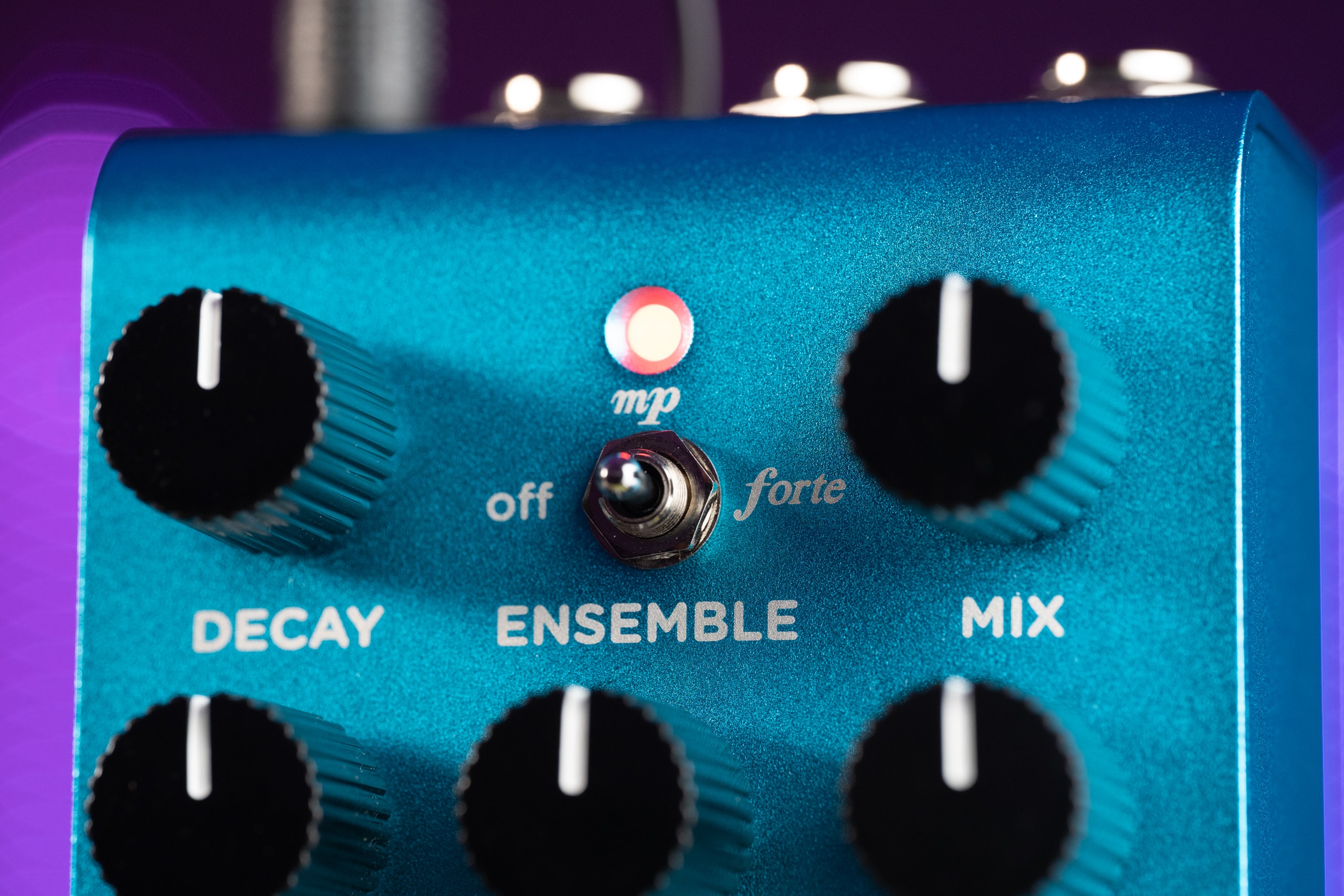
Cloudburst’s Ensemble effect works by continuously analyzing 48 different frequency bands as you play, generating upper harmonic partials of what it finds in each frequency band.
Rather than generating a static synthetic signal based solely on pitch detection, Ensemble is a dynamic and organic effect that generates harmonics based on your playing, varying its sonic character depending on where you pick, which pickup you use, and the volume envelope of what you play.
The result is a gorgeous string ensemble-like expansion of your reverberated signal that creates a unique and unforgettable playing and listening experience.
Mix and Match.

Cloudburst’s Mix knob adjusts the reverb mix from full dry at minimum to full wet at maximum (a 50/50 mix occurs at approximately 3 o’clock on the knob).
Use moderate mix settings and darker tone settings combined with short decay times to create a variety of realistic small spaces, or soar through huge ambient cloudscapes with liberal mix settings and high decay times.
Additional power-up modes allow for kill-dry (for use in parallel effects loops) and an analog dry path option.
Maintain Clarity.

A dedicated Pre-delay control lets you add space between your dry signal and the reverb — a handy tool for maintaining clarity when using higher Mix and Decay settings.
Longer pre-delay times can be useful for creating swells or blooms after notes or chords, and shorter values can be used to create reverberant slap-back echoes when the reverb is set to a smaller space.
Tailor Your Tone.

Cloudburst’s Tone knob controls the amount of high frequencies within the reverb, with a damped high end at minimum and no damping at all at maximum.
Keep the Tone control low to minimize Cloudburst’s effect on your overall guitar tone, and bring it up high to make the reverb the center of attention.
Or, control it with an expression pedal to create dramatic filtering effects in combination with long Decay times and Ensemble, if you’re feeling adventurous.
Lush Modulation.
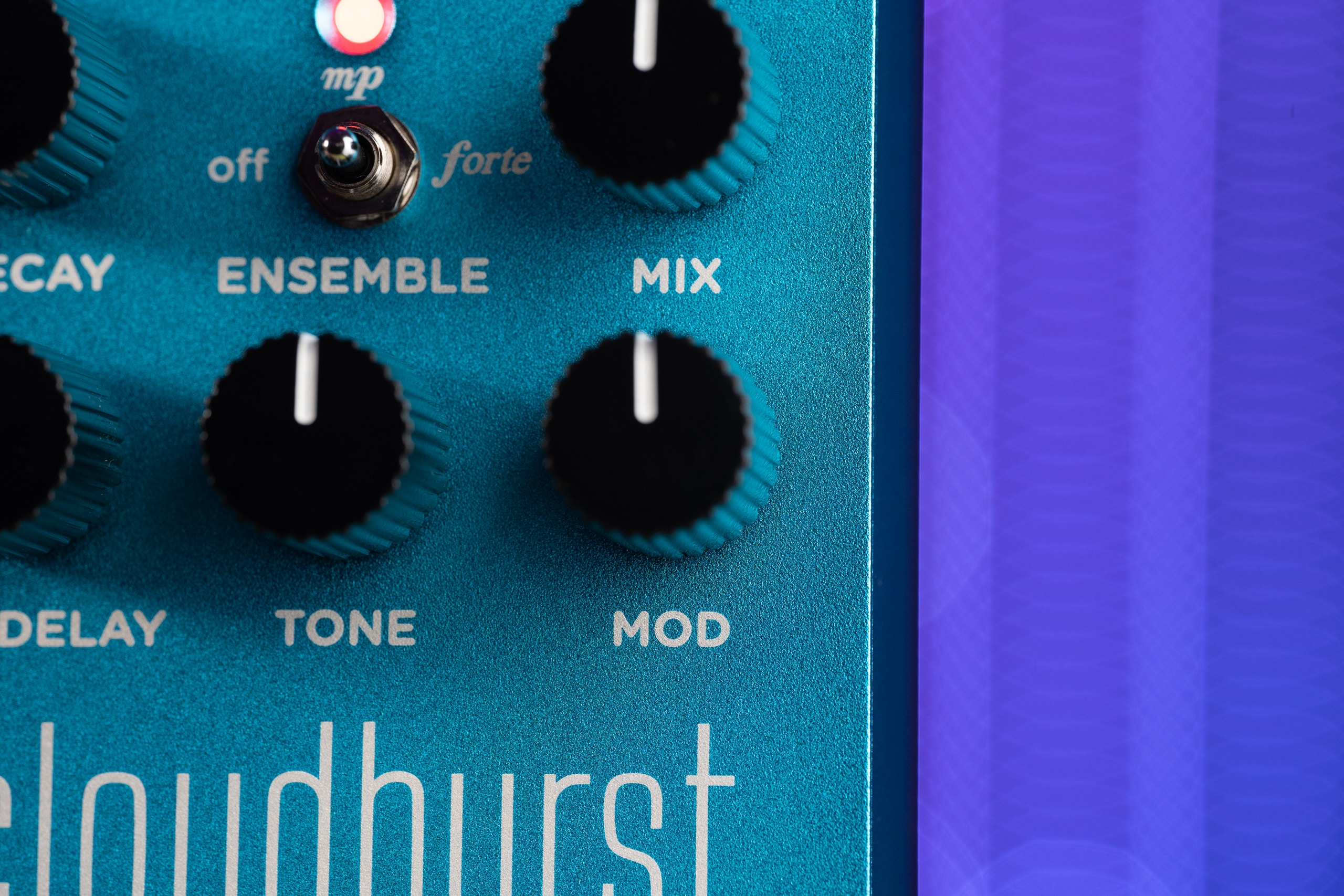
The lush effects created by modulating the lengths of a reverb’s delay lines can add movement and interest to the overall reverb sound, and Cloudburst takes it to the next level (especially when used together with Ensemble).
The Mod control operates as modulation depth from minimum to 12 o’clock, and as modulation speed from noon to maximum, where warbly “vintage sci-fi” pitch modulation can be found.
Limitless Possibilities.

Cloudburst features full MIDI implementation and 300 presets, allowing you to control it remotely by sending MIDI commands from your controller or DAW via the EXP/MIDI jack or USB-C connection.
Remotely bypass or engage the pedal, automate decay time or other knob adjustments in your DAW or recall unique presets for each song on your setlist — the possibilities with MIDI are limitless.
Choose Your Bypass Mode.
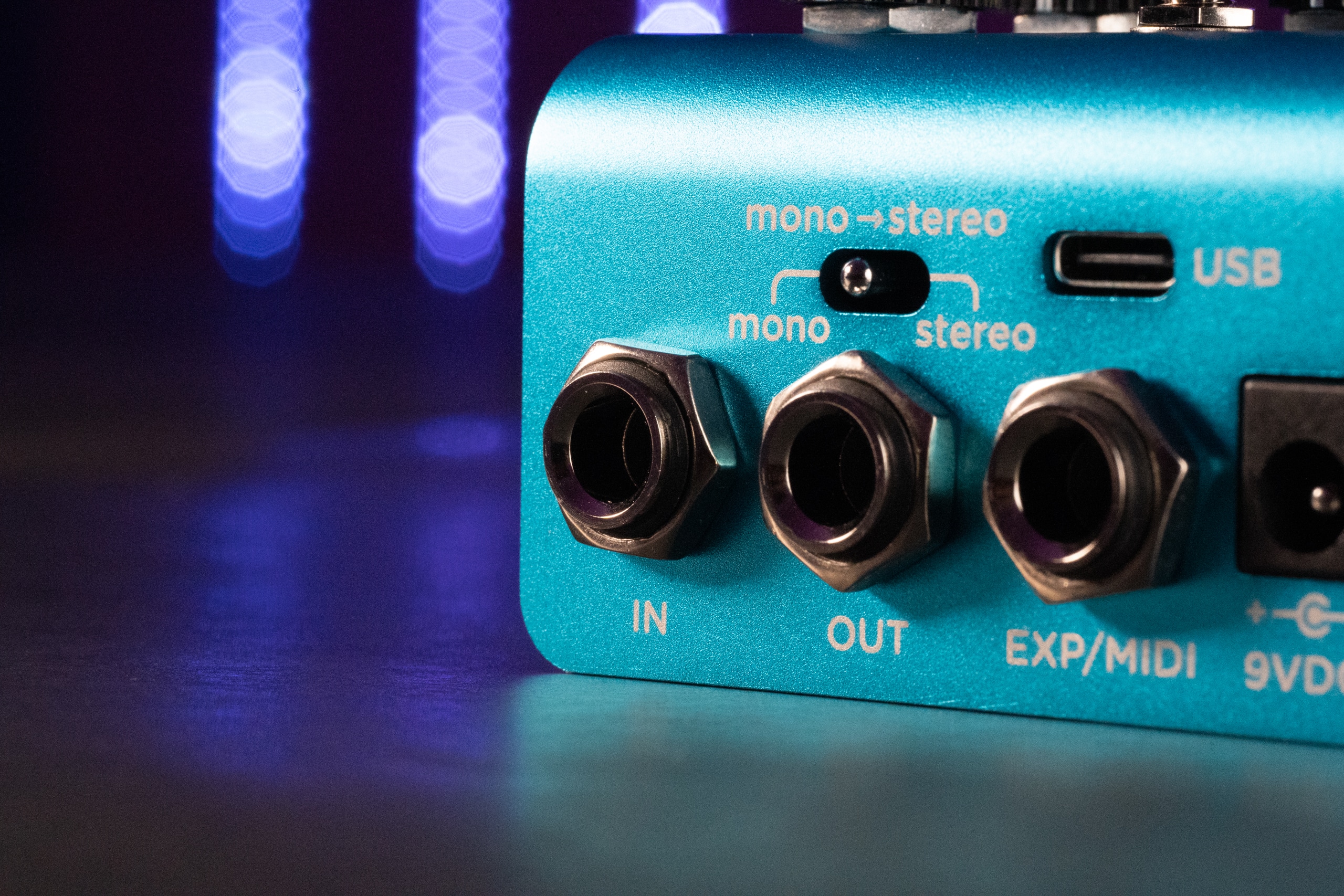
Cloudburst lets you choose between electromechanical relay-switched true bypass for a 100% untouched and unprocessed signal when the pedal is not engaged (which is the default), or our premium buffered bypass, which preserves your signal’s integrity by preventing the high frequency roll-off that can happen due to longer cable runs.
Analog Touch.

Uncompromised dynamics and feel. Exceptional touch sensitivity and responsiveness. Cloudburst feels just as good as it sounds, thanks to a high-impedance, ultra-low noise and discrete Class A JFET preamp input.
Moving In Stereo.
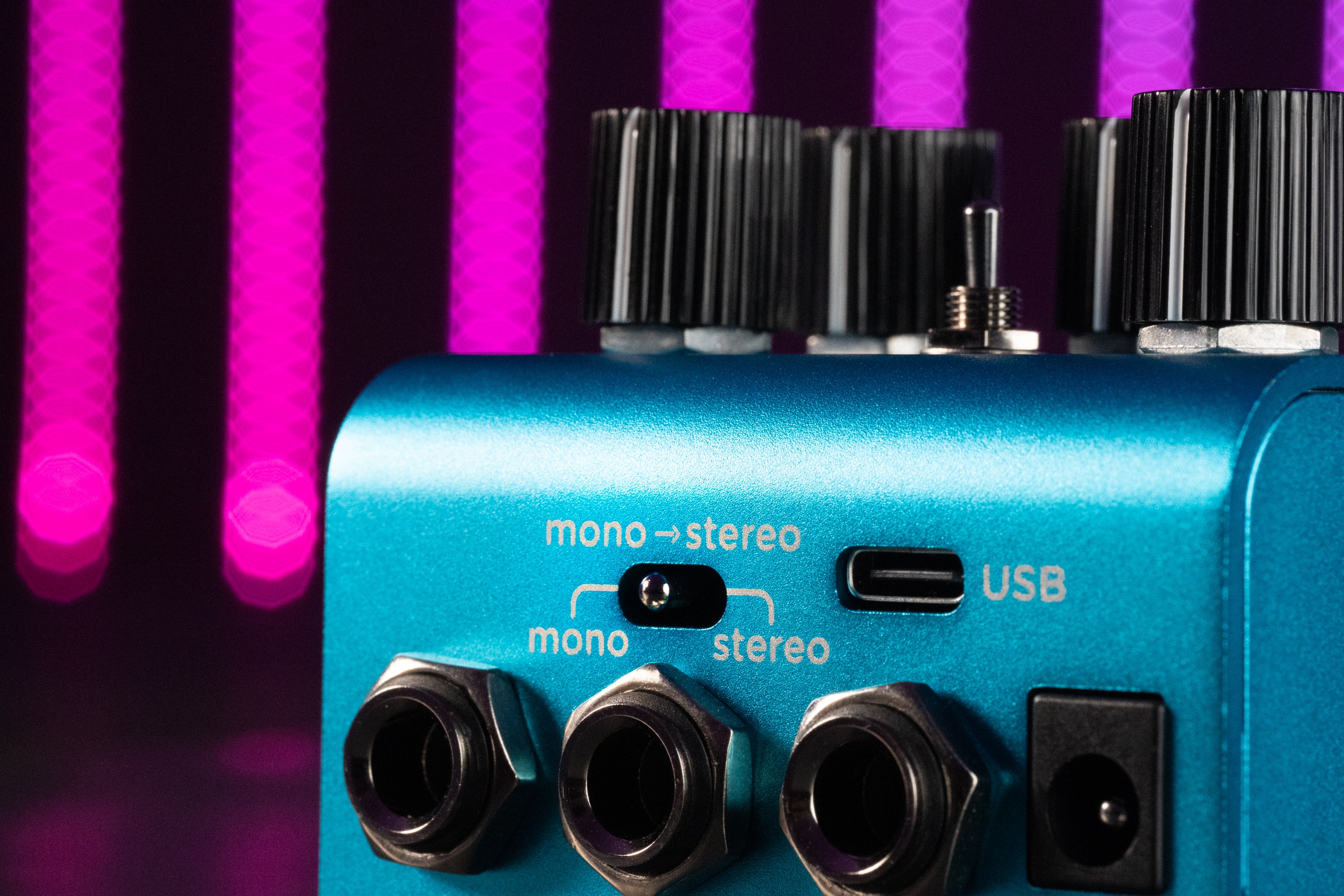
Even though it might look like it’s a standard mono effect, there’s no need to make compromises when it comes to signal routing or pedal placement with Cloudburst — it’s a stereo reverb pedal with full stereo in/out capabilities.
Equipped with a single TRS input and TRS output jack, the pedal keeps to a compact form factor while still giving you the option to use it in stereo.
A dedicated rear panel Input switch allows you to determine the audio routing, selecting between Mono In → Mono Out, Mono In → Stereo Out, or Stereo In → Stereo Out (stereo in and out requires a TRS cable for each jack).
Power To The Pedal.
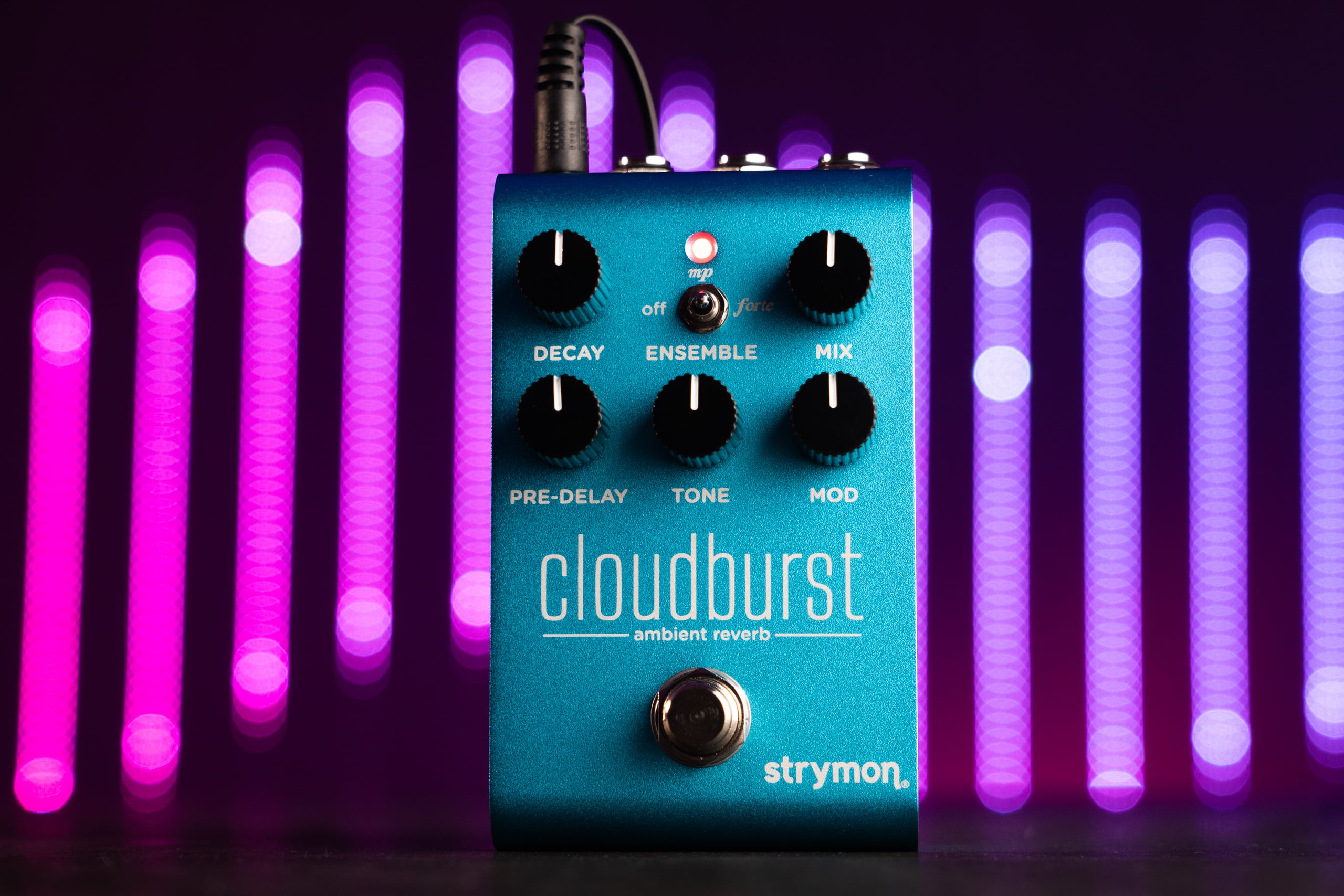
An evolution in technology led by mobile phones and laptop computers now allows our pedals to perform more simultaneous processes than ever before, and with significantly less power draw.
That means more processing power for every sonic nuance, and less power consumption on your pedal board.
- High impedance ultra low-noise discrete Class A JFET TRS stereo input
- Low impedance TRS stereo output
- Expression pedal input allows the connection of a TRS expression pedal, MiniSwitch, MultiSwitch Plus, or TRS MIDI connection
- USB jack for controlling via MIDI from a computer or for performing firmware updates
- Premium JFET analog front end
- Ultra low noise, high performance 24-bit 96kHz A/D and D/A converters provide uncompromising audio quality
- 520MHz ARM Superscalar processor
- 32-bit floating point processing
- 20Hz to 20kHz frequency response
- Audio Input Impedance: 1M Ohm
- Audio Output Impedance: 100 Ohm
- Typical signal to noise ratio: 116dB
- Strong and lightweight anodized aluminum chassis
- Power requirements: maximum 9 volts DC center-negative, with a minimum of 250mA (power supply NOT included)
- Dimensions:
- 4.6” deep x 2.7” wide x 2.5” tall
- 11.7 cm deep x 6.9 cm wide x 6.4 cm tall
- Designed and built in the USA



